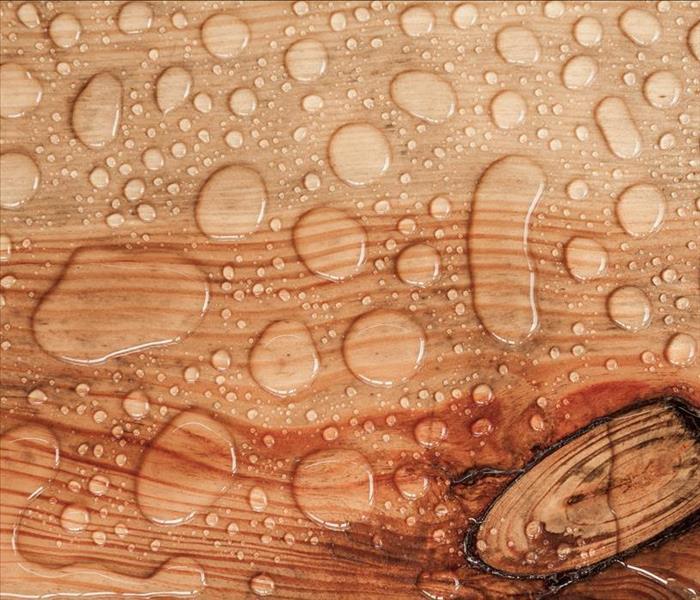How To Save Your Wet Wood Floor
7/25/2022 (Permalink)
Wood flooring is beautiful and can enhance the look of your building. However, wood floors can easily be damaged by water from a pipe burst, spill or another source. Quick action is required to prevent permanent damage.
How To Save Your Wet Floor
Waxes and sealants provide you with more time to clean up spills and other water damage before it is absorbed into the wood. However, quick action is still required to save your wood floor from permanent damage:
1. Remove Wet Objects
Anything wet that is lying on your floor will continue to leach water into the floor. Additionally, mold and mildew may grow which can infiltrate the seams and pores of your floor. Remove wet rugs, carpets, clothing, toys, furniture and other items as soon as possible. Throw out items that can not be salvaged and move the rest to a location where they can dry without damaging your floor.
2. Remove As Much Water As You Can
Use mops, towels and clean rags to absorb as much liquid as you can. If you are dealing with a pipe burst, make sure the water supply to the pipe is shut off so that additional water isn't leaking onto your flooring. You can remove larger amounts of water with a wet vacuum. Continue to vacuum even after there is no longer visible water on the surface of the floor. This will remove some of the water that is in the plank seams and wood pores. Keep vacuuming until you are no longer seeing any new water in the vacuum canister. If you are dealing with damage from a flood or a large amount of water from a plumbing issue, consider contacting a water restoration service in Layton, UT, to assist you with removing the water from the flooring.
3. Dry the Floor
Once you finish removing as much water as you can with the wet vacuum, finish drying the wood. Position a dehumidifier in the center of the room and run it on its highest setting for a minimum of 24 hours. Position fans around the room and run them at high speed. If the damage is on an upper floor, place fans on the level below and aim them toward the ceiling to help dry the subfloor and underside of the flooring. If it is not raining, you can open some windows to increase air circulation.
4. Check for Mold
Moisture promotes mold growth. Look for signs of mold in the pores of your wood floor. If you find any, clean the floor with baking soda and water or contact a mold restoration service.
5. Test for Remaining Moisture
Use a moisture testing meter to check for moisture remaining in the wood of your floors. It may take several weeks for the floors to completely dry. Keep running your fans and dehumidifier until the meter shows no moisture remaining in the flooring.
Water from a pipe burst, flood or spill can severely damage wood flooring. However, taking quick action to remove water and dry the flooring can reduce the amount of damage that occurs.






 24/7 Emergency Service
24/7 Emergency Service
